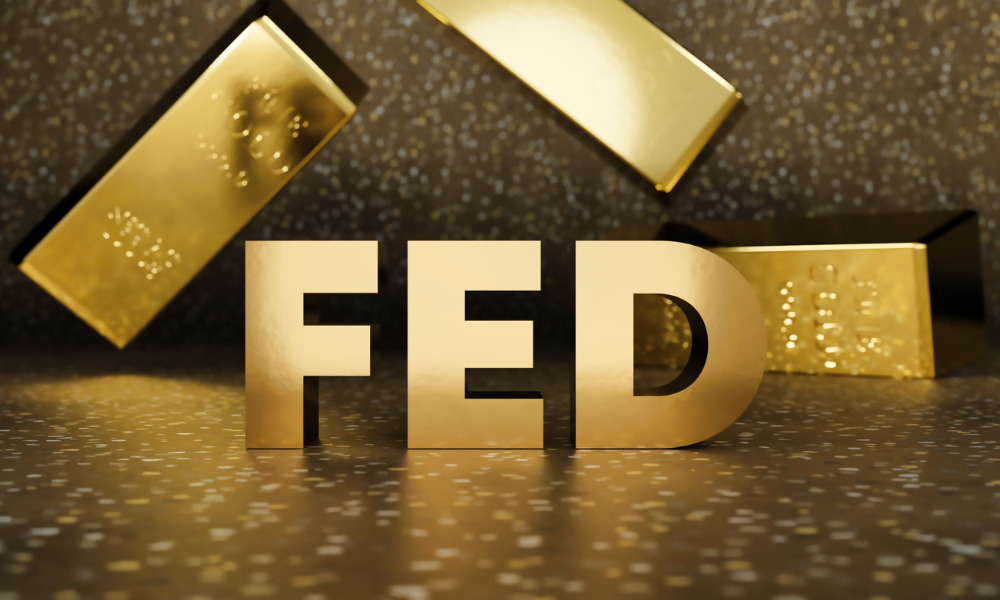Senior PM breaks down why the Fed went a bit less hawkish than expected, what advisors should be looking for that could inform a future cut

Markets went into yesterday’s Fed meeting with fears that Fed Chair Jerome Powell might put interest rate hikes back on the table. While the Fed decided to hold its interest rates steady, markets offered a sigh of relief when Powell said in his press conference that the next move was “unlikely to be a hike.” Nevertheless, US interest rates remaining this high in May was not necessarily in the base case for investors going into 2024, meaning investors may be dealing with higher US interest rates for longer.
James Learmonth, Senior Portfolio Manager at Harvest ETFs, explained why Powell and the Fed elected to hold interest rates steady once again. He highlighted certain statements from the press conference that advisors may want to pay close attention to and offered an outlook as to when we may eventually see a cut coming from the Fed. He emphasized that, overall, where markets expected a hawkish Fed, Powell gave investors a more neutral tone.
“They’re trying to be data dependant. I think what we saw from markets going into this release today was a kind of shift in extremes and the expectation that Powell would be more hawkish,” Learmonth says. “We didn’t get hawkish. We got acknowledgement that progress on inflation had slowed in the past few months, but otherwise they stuck to the script, saying that they’re continuing to monitor, that they’re sufficiently restrictive, and that they want more time to see how they moves they made so far are impacting inflation and the economy in general.”
The decision to hold, Learmonth says, largely came down to a US inflation rate that remains somewhat sticky and has even crept up slightly in recent months. While inflation hasn’t dramatically re-accelerated, in fact many subsets continue to be in deflation, the increase in energy prices has caused a pickup in overall inflation. Learmonth explains that Powell and the Fed do not see it as their responsibility to manage supply side inflation, especially when external issues like a geopolitical flare-up between Israel and Iran contributed to the spike in oil prices. The response, therefore, has been more ‘wait and see’ from the Fed.
At his press conference, Powell was all but categorical in dismissing the prospect of future interest rate hikes, which markets greeted warmly with a brief rally, which came off within about an hour. Treasury yields dropped somewhat significantly and stayed lower while equities ended the day close to where they began.
Learmonth notes that at the press conference Powell was remarkably diligent and forceful of his pushback against any hikes. He also pushed hard against the notion that the US economy is in stagflation. Despite disappointing GDP growth numbers from Q1 and the aforementioned sticky inflation, Powell drew clear distinction between this environment and the stagflation of the 1970s. Unemployment is very low, the US has posted relatively strong GDP growth over the past several quarters, and inflation still shows signs of coming down. Many of the supply and demand shocks that we saw coming out of the pandemic have also normalized.
One area that could still have an inflationary impact on the US economy is the Federal Government’s proclivity towards deficit spending, which is likely to continue no matter who wins the 2024 election. Much like in Canada, the US deficit has grown while the central bank has engaged in tightening, which means the fiscal lever is in stimulus while monetary policy is restrictive. That leaves Powell with a tightrope to walk.
As he watches for indications of a cut, Learmonth is paying close attention to the US labour market. He believes that the rate of unemployment will dictate the velocity and intensity of cuts when they come. At the same time, he notes that Powell remains cognizant of history and does not want to repeat the re-inflationary impact of the sharp cuts that came in the 1970s. If we do see the US labour market soften further, though, he thinks it’s still likely that we see cuts this year. The nature and exact timing of those cuts are still unknown, but Learmonth says that they will probably be less aggressive than we expect.
Investors might be forgiven for thinking that we’re simply repeating 2023. We went into that year predicting a slowdown in the US economy, a decline in inflation, and interest rate cuts. None of those happened. The same was predicted in 2024 and, on the surface, it appears that we’re still waiting for that too. Learmonth points to leading data and some underlying numbers, however, to note that we are now far closer to the Fed’s pivot point than we were a year ago.
As advisors discuss this meeting with their clients and talk about positions going forward, Learmonth emphasizes how important it is to stay focused on what the data is saying.
“It’s always important to stay focused on the fundamentals. In the US we’ve seen about three fifths of the S&P 500 report their first quarter earnings now and for the most part they’ve continued to be relatively strong,” Learmonth says. “Growth is pretty solid across most sectors. Companies have continued to beat expectations, generally speaking. Some have taken more prudent approaches to forward guidance, but it’s important to stay focused on the long term and avoid getting sucked into the noise. Fundamentals are still relatively strong across the economy, so it’s important to stay invested and look for opportunities to present themselves.”



